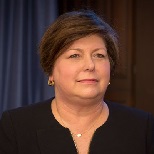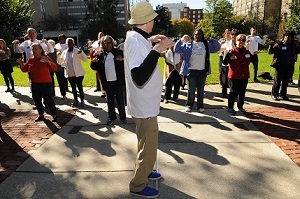 Special to the Philanthropy Journal
Special to the Philanthropy Journal
By Jean Papaj
In 2017, Ralston Center marks its 200th anniversary of service to older adults. Founded January 9, 1817, as the Indigent Widows and Single Women’s Society (IWSWS) of Philadelphia, the Society’s creation was led by Sarah Clarkson Ralston, daughter of former Philadelphia Mayor Matthew Clarkson and wife of wealthy merchant Robert Ralston, and a group of philanthropic women. Their goal was to establish a nonsectarian home specifically for elderly women who had fallen on hard times.
As we prepared for our 200th Anniversary celebration, we looked back to learn what we could about the actions the Board of Managers and staff took to deliver our mission, remain relevant, and sustain the organization financially over time. Here’s what we discovered.
 Keep meticulous records of decisions, activities, finances, news and donations.
Keep meticulous records of decisions, activities, finances, news and donations.
Our records go back to the very first meeting of the Indigent Widows and Single Women’s Society held January 9, 1817. We are fortunate to be able to access the accomplishments and challenges of the IWSWS, how the leaders fulfilled the substance and intent of the mission, how decisions were made and programs and services financed, and what the outcomes were. We can “hear” the voices of the Board of Managers as they struggled to run a home for elderly women in times of war, epidemics, natural and man-made disasters, financial upheaval, expanding government regulations and – most of all — how they could respond to the increasing number of elderly women in need of homes. These archived records enabled us to renew relationships and establish new ones with descendants of those who donated in the past. We were able to put the organization’s accomplishments in the context of the times and use information on successes and disappointments of the past to inform the development of new plans. The records also provide story and event ideas for the press and public.
Fundraising and “telling your story” is the responsibility of everyone in the organization every day.
 Though the IWSWS board’s annual reports detailed activities and finances, they were, to a significant extent, fundraising appeals. The finances of the institution are described through most of the 19th century as extremely precarious.[1]
Though the IWSWS board’s annual reports detailed activities and finances, they were, to a significant extent, fundraising appeals. The finances of the institution are described through most of the 19th century as extremely precarious.[1]
Annual reports frequently restated the organization’s purpose, giving each member of the board of managers a clear and unified message to share, even before we understood “elevator pitches.” The board of managers was transparent about the organization’s work and finances, and local newspapers in the 1800s reported on the annual reports and financial summaries of the Society.
Acutely aware of their leadership role, many board members recognized the need to make their own financial contribution to the society (often through their husbands) and exerted influence on other prominent Philadelphians. While the Society’s endowment was well invested and generated an annual income, the income generated always fell short of the organization’s needs.[2]
Sarah Ralston spent much of her time searching for funding as she promoted the mission and value of the Society, and aside from the home’s daily operations, the board of managers focused on the never-ending task of raising funds. In 1825, the board urged each member to “obtain at least 15 subscribers, and as vacancies occur in her subscription list, supply them by new names [immediately].”
Eventually, the residents became aware of the need to raise funds for their home. In 1919, the residents held a fair, where they sold their needlework and other handiwork to invited members of their families and the community, donating the proceeds to the society to sustain the home. The residents were happy to contribute in this manner, and the fair became an annual event with the funds earmarked strictly to recreational opportunities selected by and for the residents.
Recognize donors and put faces on the people who benefited from their generosity.
 From the very beginning of our organization, each donor was recognized in our annual reports and thanked publicly no matter the size of the donation. Good stewardship practices increased awareness of the organization and its supporters, resulting in donations from other like-minded individuals and organizations.
From the very beginning of our organization, each donor was recognized in our annual reports and thanked publicly no matter the size of the donation. Good stewardship practices increased awareness of the organization and its supporters, resulting in donations from other like-minded individuals and organizations.
As early as 1824, the managers of IWSWS invited donors and subscribers to the home to witness “the happiness which their charity has promoted.”[3] The annual reports emphasized the level of care for the residents—not rules and regulations.[4] Residents found “not merely a shelter…but a peaceful home” where “they meet with every attention to their comfort.”[5]
We conduct listening sessions with the people we serve as research for programs we are developing, to gauge the effectiveness of our services and for storytelling. These stories bring our work to life so current and potential donors will see and feel how people benefit from our work We continue to include our donors in our annual reports, send them our latest news, and invite them to events and celebrations so we remain front of mind.
Remain relevant while extending the legacy.
In 1973, IWSWS changed its name to Ralston House in honor of Sarah Ralston and in line with the language used at the times for older adult residences. Eventually changing attitudes about aging and the development of new retirement communities diminished demand for the kind of environment we provided, prompting changes in programming to fulfill our mission differently. We ceased being a residential facility in 1985 and turned our focus to providing services for older adults living at home. We now do business as Ralston Center.
As the times and the needs of older adults have changed during the last 200 years, so have we. No longer housed in one building, our programs are intricately woven in to the fabric of the communities we serve.
In addition to our signature programs – Ralston My Way, Joseph J. Hill Ralston Mercy-Douglass House, Ralston Wellness and the Ralston Caregiver Excellence and Graduate Nursing Student Awards – we are extending Sarah Ralston’s legacy with our Age-Friendly Initiative, leading 50 organizations to transform West Philadelphia into a model community for aging well.
Today our mission is:
“To improve the health and quality of life for older adults in Philadelphia.”
And so we begin our next 200 years.
[1] This description is found in virtually all of the early reports. For example, the 1836 report notes that “the funds of the Society are always precarious and often extremely low.” On occasion the society is depicted as running out of money, only to be rescued by a benefactor.
[2] Minutes, May 5, 1836. By 1907 the endowment was handled by the Girard Trust Company; Annual Report 1907 (1908).
[3] Annual Report 1824 (1825), Annual Report 1836 (1837). References to happiness are balanced in the annual reports by melancholy reflections on the advanced infirmity of many residents.
[4] Annual Report 1844 (1845).
[5] Annual Report 1836 (1837).
Jean Papaj, MBA, is the Director of Communications and Marketing at Ralston Center. Ralston Center’s goal is to provide people 55 years of age or older with the services and support they need to live in their own homes and communities as they age.




